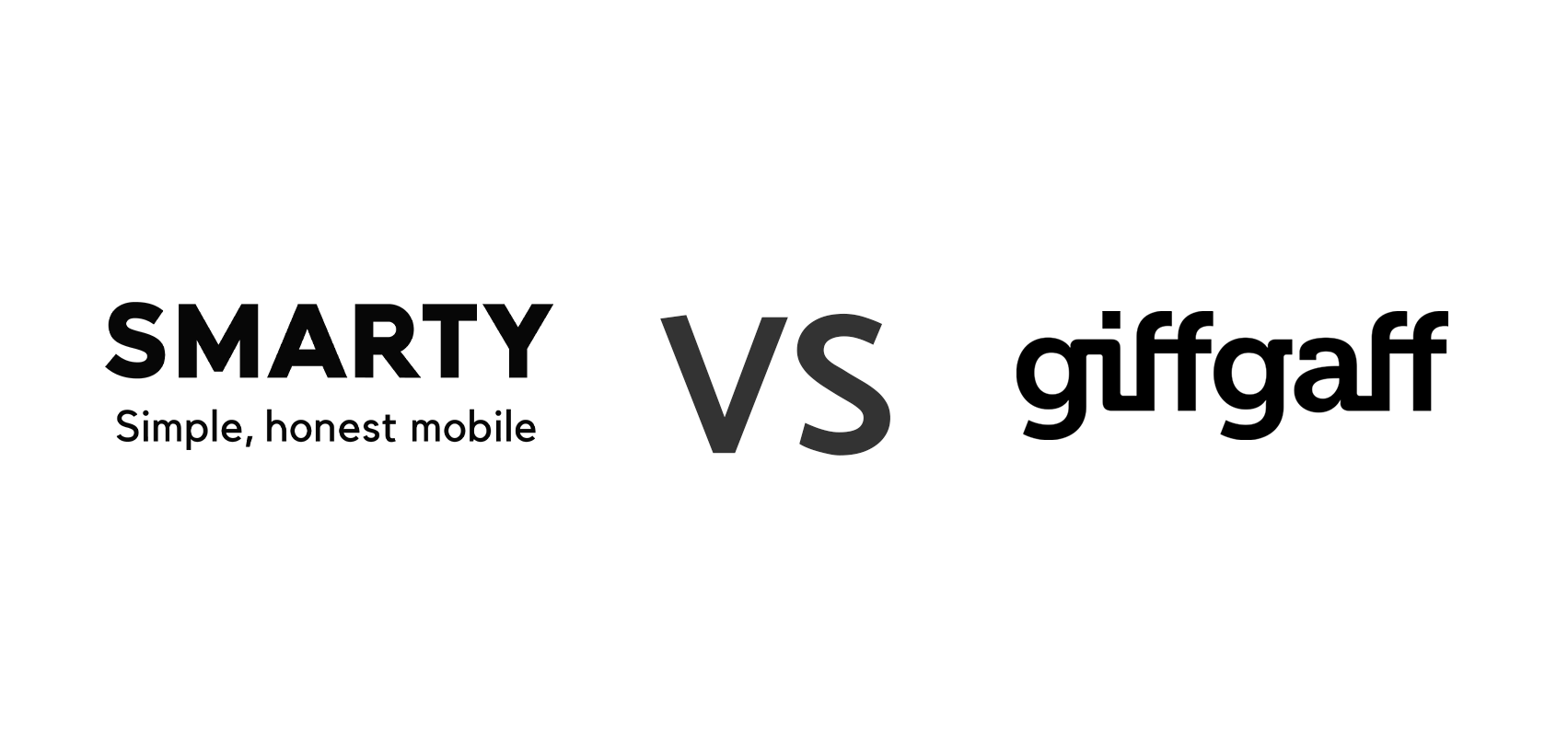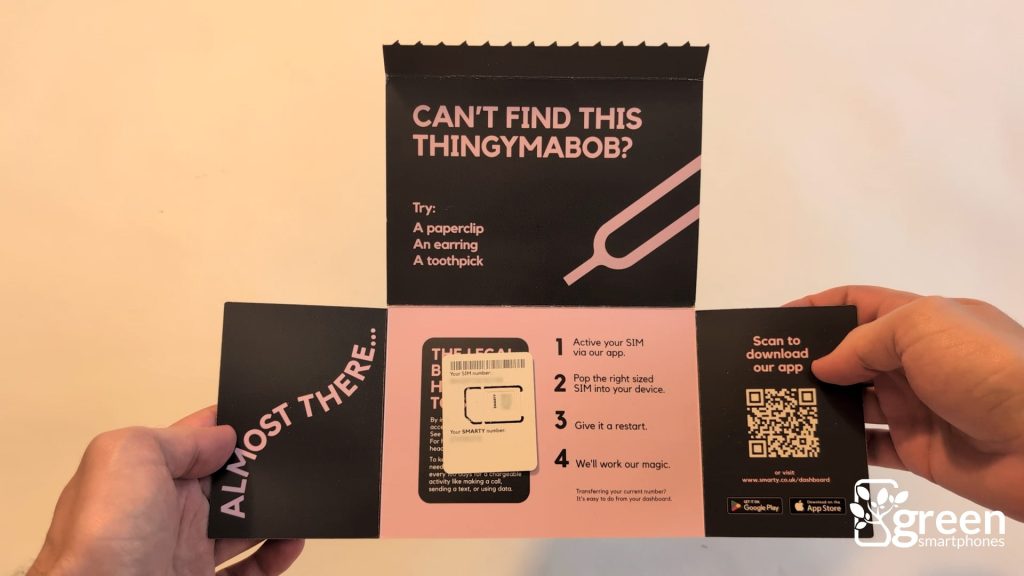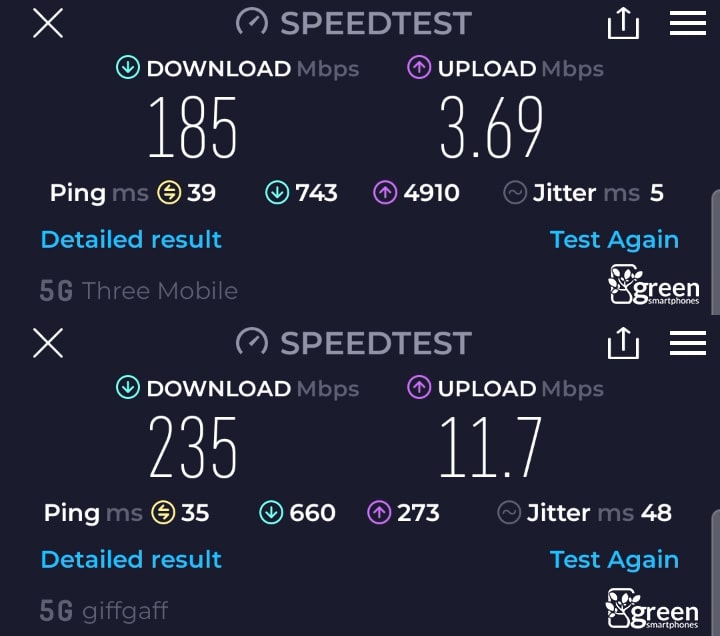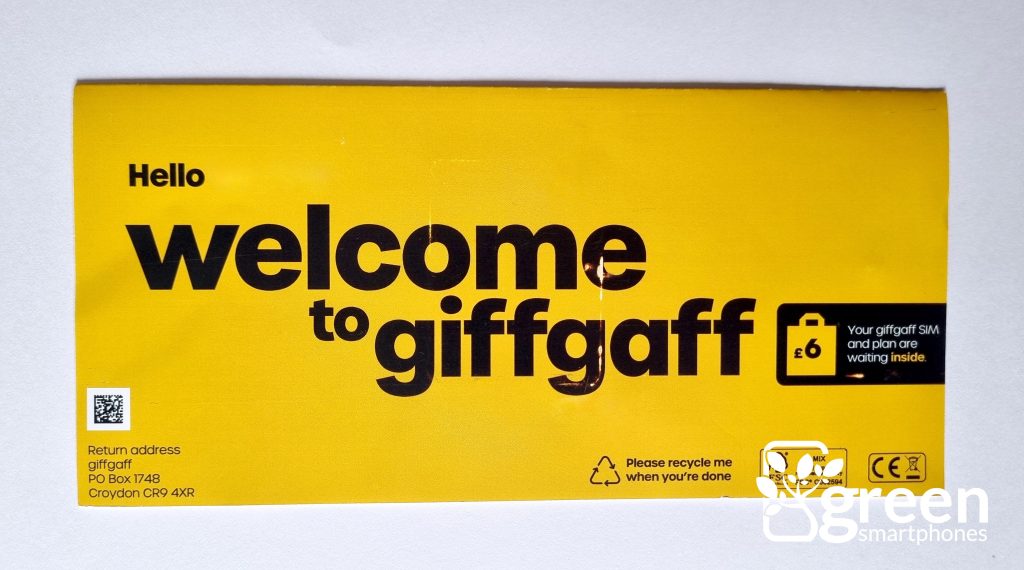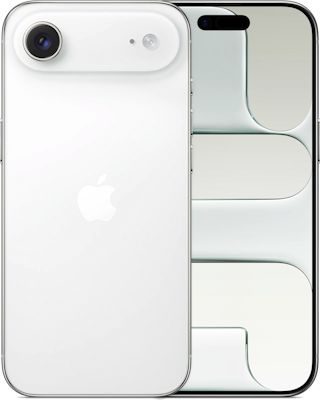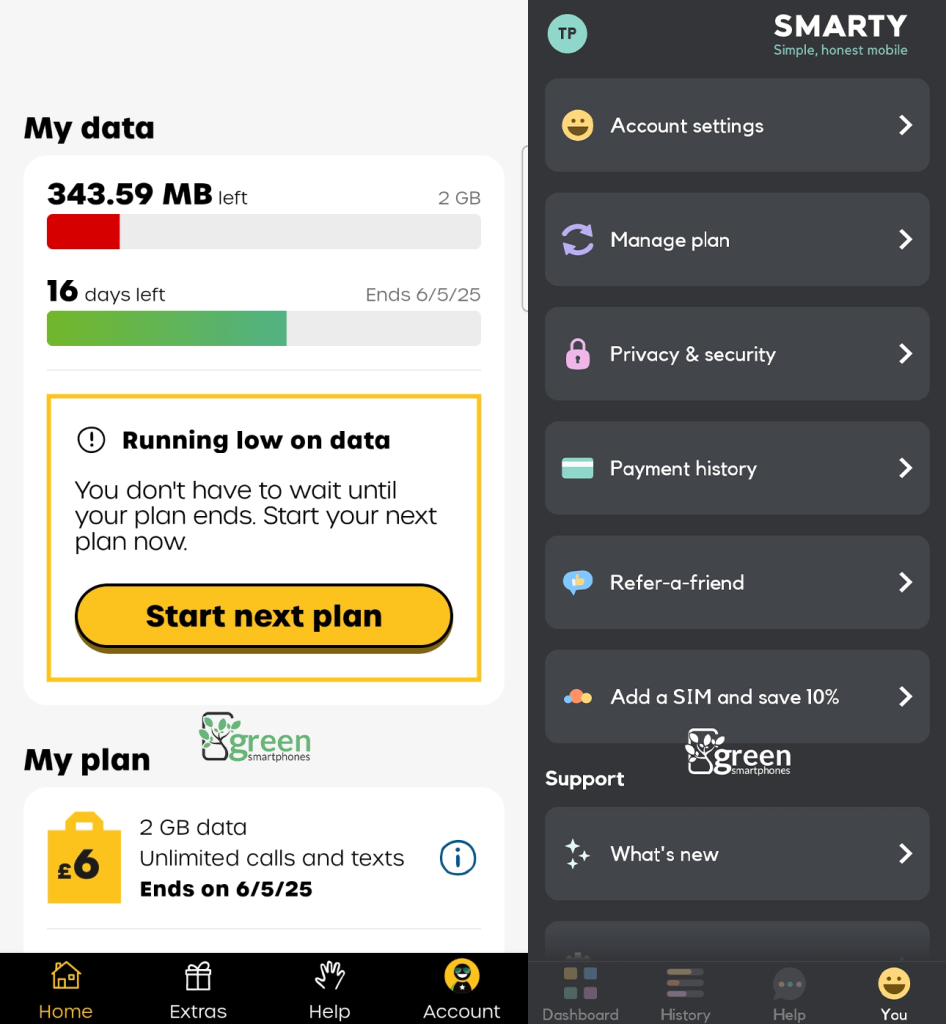Not sure whether to buy a SIM plan from Smarty or giffgaff?
In this article, we’ve compared Smarty and giffgaff, based on our experience using pay as you go SIMs on both of these networks.
We’ve assessed these two mobile providers in a number of key areas, including their 4G/5G performance, customer service, value for money, roaming allowances, and more, to see which is best.
Before we begin, if you’re searching for a new mobile plan, on any network, use our comparison site to find the cheapest pay monthly phone plans or SIM-only deals on the market right now.
Contents
- Overview
- Coverage and speeds
- Roaming allowances
- Value for money
- Customer service
- Verdict: should you join Smarty or giffgaff?
Overview
Smarty and giffgaff are mobile virtual network operators (MVNOs), meaning they lease network access through another mobile carrier, instead of having their own signal masts.
Smarty currently uses the Three network, while giffgaff uses O2.
Currently, both of these companies are focused on offering cheap pay as you go SIM plans.
In fact, the only thing Smarty sells at the moment is 30-day SIM deals. With giffgaff, they have pay monthly phone and SIM-only contracts as well, if you don’t mind committing for 18 months.
Smarty and giffgaff are both very easy to sign up for, assuming you’re buying a pay as you go SIM.
You can order a free SIM card online, then add data onto it once it arrives. It’s your choice whether you want to enable auto-renew or not, once you choose a data plan.
Even though they’re both quite cheap options, Smarty and giffgaff each include unlimited calls and texts on all of their plans.
Smarty does offer data-only SIMs, but they’re normally more expensive for some reason, so we wouldn’t recommend them. You can still use Smarty’s regular SIM plans with calls/texts for mobile broadband.
There aren’t any perks or bonuses you get when signing up for a giffgaff or Smarty SIM plan, unlike when buying a pay monthly deal from one of the big four networks.
But it is worth mentioning, Smarty is the only one of these providers to offer family discounts. You can get 10% off each additional SIM you buy from them under the same account, helping you save money by switching multiple people in your household to their network.
Coverage and speeds
Smarty uses Three, which is the UK’s fastest 5G network in terms of its average download speeds, while giffgaff uses O2, which is the slowest in the UK.
Despite this, in our area, we sometimes experienced faster 5G speeds on giffgaff, especially when it came to uploads.
While Three should theoretically perform a lot better on 5G, given their higher average speeds, we found that this wasn’t always the case.
On 4G, giffgaff has the upper hand over Smarty.
O2 has very good 4G coverage, probably only second to EE in the UK, including in very remote areas, and we could see this when using giffgaff.
Their 4G speeds are great, especially their upload speeds.
And using a giffgaff pay as you go SIM, we could get good 4G signal even in rural areas, in certain places we couldn’t make calls or get online using a Smarty SIM card.
We found that both of these MVNOs offer the same coverage and speeds as their parent providers, which is good to see. Their customers aren’t throttled or deprioritised, which isn’t always the case when using a piggyback network.
Ultimately, if having good overall coverage is most important to you, we’d recommend choosing giffgaff over Smarty.
But if you live in an urban area, and are mostly concerned with getting fast 5G, Smarty should perform better in this area – though as we found, they don’t always have faster 5G speeds.
Roaming allowances
Smarty offers better roaming allowances than giffgaff at the moment.
Currently, Smarty customers can use up to 12GB of their data allowance each month when roaming in the EU, and you can also use your calls and texts just like at home, free of charge.
This 12GB cap is a fairly restrictive fair usage limit, but isn’t too bad considering how cheap Smarty’s SIM plans are.
It’s similar with giffgaff – you can roam free of charge in the EU, no matter what type of giffgaff SIM plan you have. However, their monthly roaming fair usage limit is just 5GB – less than half of what Smarty gives you.
If you often travel abroad, especially in the EU, Smarty offers much more generous free roaming allowances than giffgaff.
Outside of Europe though, both Smarty and giffgaff will charge you per megabyte of data used, per minute of calls made, and per text sent.
This can get very expensive very quickly, so we wouldn’t generally recommend roaming beyond the EU with either of these two providers.
Value for money
If you compare rolling monthly SIM plans with similar data limits, Smarty tends to offer lower prices than giffgaff at the moment.
When you buy a pay as you go SIM from Smarty, you tend to get more data for your money, or you might be able to get the same data limit for a lower monthly cost.
And it’s not like Smarty offers a worse service, compared to giffgaff. They have faster average 5G speeds and better roaming allowances, as we’ve just discussed.
The advantage giffgaff has from a price point of view is, their 18 month contracts can offer lower monthly costs, if you don’t mind committing for the long term.
And their phone contracts can also offer good value for money, compared to buying from O2 or another big four mobile network directly.
Despite this though, on the whole, we think Smarty offers better value for money than giffgaff, given the much lower prices they’re charging at the moment.
Customer service
Even though they offer lower monthly costs, Smarty also outperforms giffgaff when it comes to customer service.
Smarty customers are generally a lot more satisfied with the service they’re receiving, compared to giffgaff users.
Neither of these companies has a customer service phone number you can call – you’ll need to use live chat instead – and they also push you towards their community forum to get help with any issues that arise.
Most MVNOs at this price point do this – you’ll normally have to choose a more expensive provider like Tesco Mobile to get access to phone-based support.
The difference is, Smarty makes it a bit easier to reach a human, from what we’ve seen. For example, they have a support email address you can use to bypass their live chat, if you’d prefer.
We find the Smarty team more helpful, and they’re quicker to respond when you use the online web chat, in our experience.
We also prefer the Smarty app to giffgaff’s one. It’s cleaner, simpler, and makes it easier to find the information you need.
giffgaff’s app is also quite simple, but doesn’t make it quite as easy to find what you’re looking for when you open it, and Smarty’s app tends to load quicker, when we tested it on Android.
It’s also easier to cancel your SIM on Smarty compared to giffgaff in our experience.
Verdict: should you join Smarty or giffgaff?
We would generally lean towards Smarty over giffgaff at the moment.
Smarty offers better customer support, better roaming allowances, better 5G speeds (though not everywhere), and better value for money.
giffgaff is still cheap though, and they’re definitely worth considering if you often struggle to get good 4G signal in your area. Their overall coverage is better than Smarty’s, and they still offer fast 5G from our testing.
But as an overall package, Smarty is a better choice at the moment, in our opinion, in large part because they’re a lot cheaper.
About the author

Tom is the founder of Green Smartphones. You’ll find him writing about phones on the Green Smartphones blog, or talking about SIM deals and mobile networks on our YouTube channel. He’s the Android expert on the team – currently using a Google Pixel 9, recently upgrading from a very long-suffering Note 20 Ultra. When he’s not working on Green Smartphones, you’ll find him playing football or hiking.


